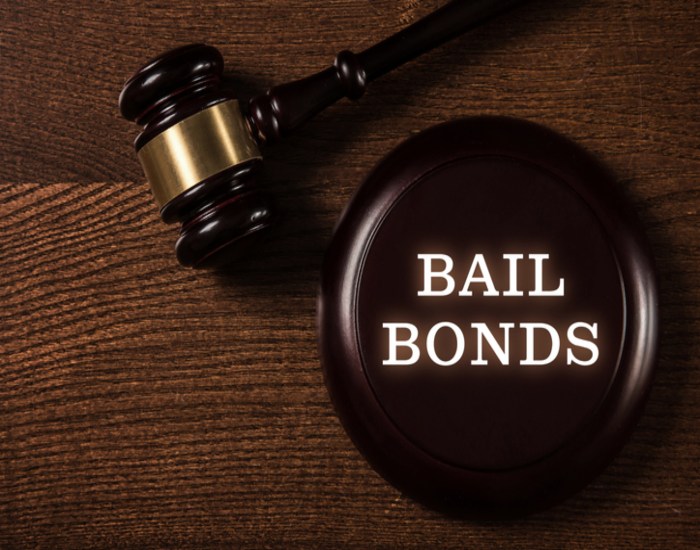Navigating the Bail Process with Bail Bond Company Newark Ohio: Your Complete Guide
Navigating the Bail Process with Bail Bond Company Newark Ohio: Your Complete Guide
Blog Article
Streamlining the Bail Process: Your Overview to Bail Bonds
Navigating the bond procedure can frequently feel overwhelming, specifically for those strange with the different types of bail bonds and the steps entailed in safeguarding release. Once arrested, the succeeding bond hearing will determine the economic commitments needed for release.
Understanding Bond Fundamentals
While the legal system can often show up overwhelming, comprehending the fundamentals of bond is necessary for browsing the complexities of pretrial release. Bond works as a financial guarantee that an offender will appear in court for their set up hearings. When a person is arrested, a court establishes the bail quantity based on numerous aspects, including the nature of the criminal activity, the accused's criminal history, and the danger of flight.
Bond can take various kinds, including cash money bail, where the offender pays the total upfront, or surety bonds, where a bond bondsman ensures the bond in exchange for a cost. If the accused falls short to appear in court, they waive the bail quantity, which can lead to added legal effects.
In many cases, people might be released on their own recognizance, suggesting they do not need to pay bond yet must guarantee to return for their court days. Recognizing these foundational principles is important for offenders and their families as they browse the bond procedure, making sure educated choices are made throughout a challenging time.
Exactly How Bail Bonds Work
Recognizing how bail bonds job is essential for any person involved in the bail procedure. A bail bond is a legitimately binding agreement in between a bondsman, the accused, and the court. When an accused is apprehended, a judge sets a bail amount meant to ensure the person's appearance at future court hearings. They can look for the solutions of a bail bondsman. if the accused can not afford to pay the full bond quantity - bail bond company newark ohio.
The bail bondsman generally charges a non-refundable cost, typically around 10-15% of the complete bond amount. This charge represents the bail bondsman's settlement for presuming the monetary risk connected with the bail. When the fee is paid, the bail bondsman articles the full bond total up to the court, securing the offender's launch from custodianship.
In exchange for this service, the bondsman might need collateral, such as building or properties, to alleviate prospective losses if the accused fails to appear in court. If the offender does not participate in the arranged hearings, the bail bondsman has the right to recover the bond amount through lawful ways, which might consist of employing a bounty seeker. Understanding this procedure can aid people browse the intricacies of safeguarding a bail bond successfully.
Sorts Of Bail Bonds
After safeguarding a bail bond, it is essential to recognize that not all bond bonds coincide; they can be found in various types designed to fit various situations and demands. One of the most typical kind is the guaranty bond, which involves a bond bondsman that guarantees the full bond amount to the court for a fee, typically around 10% of the overall bond. This is perfect for those that can not pay for to pay the complete bail quantity upfront.
An additional type is the cash money bond, where the offender or their depictive pays the complete bond amount in cash straight to the court. This choice is usually used when people have the monetary means and like to recoup their funds upon court appearance.
Building bonds allow people to use realty as security for bond. bail bond company newark ohio. This calls for a property evaluation and can be intricate, however it is valuable for those who possess useful properties
Last but not least, some jurisdictions supply individual recognizance bonds, where the offender is launched based on an assurance to show up in court with no Source financial responsibility. Understanding these types of bail bonds is crucial for making informed decisions in your situation.
The Bond Refine Steps
Navigating the bond procedure includes a number of crucial steps that can significantly impact the end result of an offender's circumstance. The process generally begins with the apprehension, throughout which the person is collared. Once arrested, the defendant will be informed of the fees and may have a bond hearing set up, where a court will certainly figure out the bail quantity based on the severity of the criminal activity, trip risk, and criminal background.
After the bail quantity is established, the accused or their representative can speak to a bondsman. The bail bondsman will certainly evaluate the situation, explaining the regards to the bond and the charges included, which typically amount to a percent of the overall bond. If an arrangement is reached, the bail bondsman will certainly publish the bail with the court, permitting the defendant to be launched from protection.

Tips for Selecting a Bond Representative
Selecting a bond representative is an essential action that can substantially influence the bail process. It is vital to choose an agent who not just recognizes the lawful complexities yet likewise supplies dependable assistance during this stressful time. Begin by investigating accredited bond representatives in your area; ensure they possess the essential qualifications and experience in managing your specific situation.
A trusted bond agent ought to exhibit professionalism and reliability, openness, and empathy. Don't hesitate to ask concerns concerning their charges, procedures, and any prospective security needs.
Furthermore, consider the schedule and responsiveness of the bond agent. An excellent agent must be available 24/7, all set to provide help whenever essential. Assess their interaction design; an agent who pays attention and clarifies clearly can make the procedure more workable.

Final Thought
In final thought, browsing the bond process requires a clear understanding of the various types of bail bonds and the procedural steps included. Engaging with an accredited bond bondsman is critical for facilitating release while guaranteeing conformity with court obligations.
Navigating the bail process can commonly really feel frustrating, especially for those unfamiliar with the various types of bail bonds and the actions entailed in safeguarding release.Comprehending exactly how bail bonds job is crucial for any person entailed in the bond procedure. A bail bond is a lawfully binding contract between a bail bondsman, the defendant, and the court.After securing a bail bond, it is essential to recognize that not all bond bonds are the same; they come in numerous types created to suit various situations and demands. The most common kind is the surety bond, which includes a bond bondsman who ensures the full bond amount to the court in exchange for a charge, usually around 10% of the total bail.
Report this page